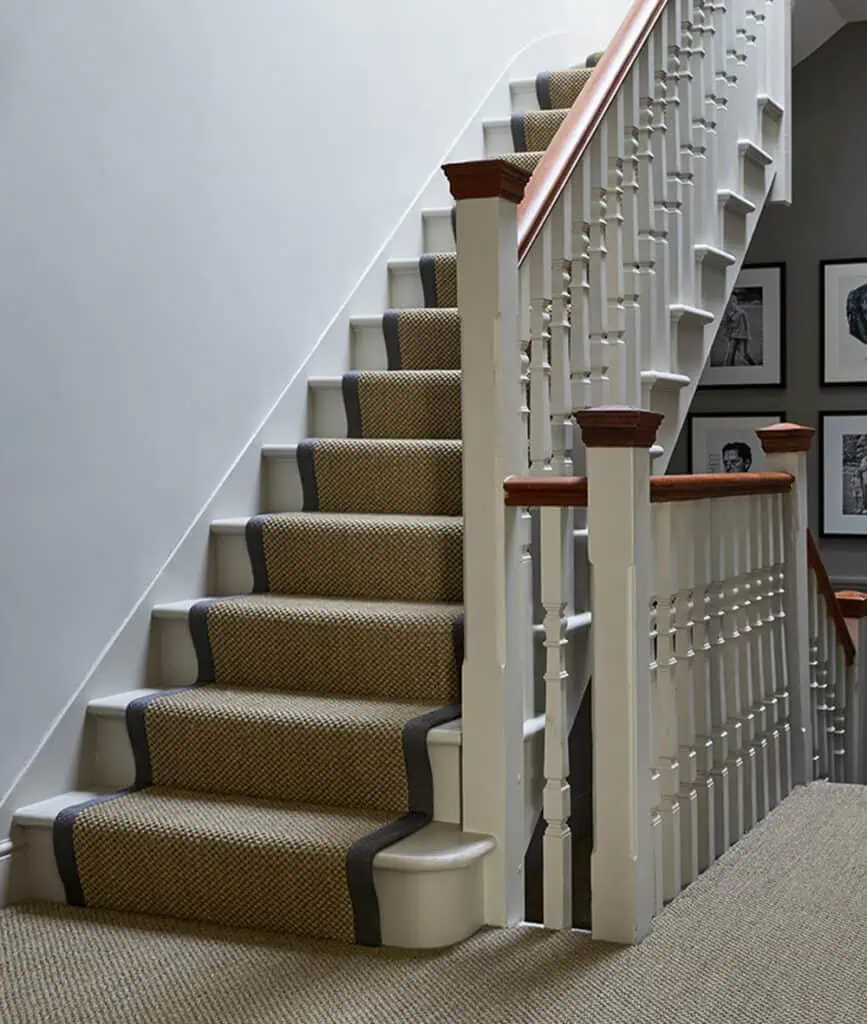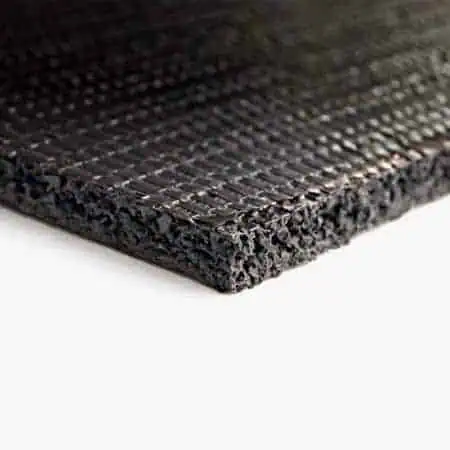When you’ve decided on a new carpet, the next thing on the list tends to be underlay – and what type, thickness and density works best with the carpet you’ve chosen. However, when it comes to fitting a stair runner, you might not have even considered underlay, even though it can make a huge difference in comfort and longevity.
By the end of this guide, you’ll know why it’s a good idea to lay underlay beneath your stair runner and what products will perform best on your staircase.
In this guide
Do you really need underlay for a stair runner?
Do you need to put underlay beneath your stair runner? It’s not compulsory, but it’s a smart move. As flooring experts, we always recommend pairing a high-quality underlay with your runner for added comfort, safety and style.
Without it, your carpet runner will show signs of wear and tear much quicker and won’t feel as comfortable underfoot. This is especially true for high-traffic areas, like stairs, where extra support and durability are key.
So, while technically, you don’t need underlay, it makes sense to install it.
Stair runner underlay considerations

After deliberating over the perfect stair runner, choosing the right underlay for it can feel overwhelming, so we’ve broken everything down to make the decision much easier.
When it comes to choosing underlay for a stair runner, the most important things to think about are thickness and density.
Underlay thickness
Underlay thickness is the height of the underlay, and it falls into three main ranges:
Up to 6mm: Although it offers lower cushioning and sound reduction levels, it allows your runner to sit flatter against the stairs, which can be important if you have an open staircase and can see the side profile of the stair runner (you don’t wat too much lift).
6mm to 9mm: This strikes a great balance of comfort and support, but with runners not covering the entire step, the higher the underlay sits, the more chance of trips, so look to keep it closer to 6mm than 9mm.
10mm+: This is perfect for low-traffic areas such as bedrooms or living rooms where you want extra cushioning underfoot. However, this extra thickness significantly increases the risk of accidents, not to mention creating a bulky look for stair runners.
Underlay density
Density measures the amount of material per cubic metre (expressed kg/m³) of underlay. The higher the density, the more material is packed in, and the more hard-wearing the underlay will be.
Density ratings are split into three ranges:
Up to 100 kg/m³: This is the least durable option, most suitable for low-traffic areas, like bedrooms.
100 – 150 kg/m³: This provides a great balance of comfort and durability, making it ideal for most areas of the home, including stairs.
150 – 300 kg/m³+: This option is the most durable but least comfortable. High-density underlay is commonly used in commercial spaces or high-traffic areas where longevity is the priority.
While it can be tempting to go for the thickest and most dense underlay, it’s important to consider where it’s being laid.
The ideal combination for a stair runner
- Thickness of 6-8mm
- Density of at least 120 kg/m³
This would feel comfortable underfoot, cope well with the impact of constant foot traffic, and help prevent accidents thanks to its relatively low height.
Types of underlay

As well as variations in density and thickness, underlay is also available in a range of materials – and each can affect comfort and durability, so it’s worth exploring the options to find the ideal product for your project.
PU (polyurethane) foam underlay
Benefits: Foam underlay is soft underfoot, provides excellent thermal insulation and is eco-friendly. It is also easy to handle and available in higher densities for added resilience.
Suitability: Foam is perfect for light to moderate-use staircases.
Cons: On high-traffic staircases, it may flatten and wear faster (unless you opt for a higher-density foam).
Sponge rubber underlay
Benefits: Sponge rubber offers an ideal balance of comfort and durability. It recovers well from impact and lasts longer than foam.
Suitability: It’s great for moderate to heavy-use staircases.
Cons: Not as cheap or soft as foam.
Crumb rubber underlay
Benefits: Crumb rubber underlay is extremely hard-wearing and offers firm support, even at lower thicknesses. It is made from recycled materials, making it an eco-friendly choice.
Suitability: It is great for busy, heavy-traffic staircases where durability, rather than comfort, is the main priority—that’s why it is commonly used in commercial spaces.
Cons: Because of its high density, rubber can feel much firmer underfoot. It is also weighty and cumbersome to work with.
Each material has its strengths, so it’s important to choose the one that best fits your needs. PU foam is soft and affordable, sponge rubber offers great comfort and durability, and crumb rubber feels firmer underfoot but will outlast any other material.
The best underlays for stair runners
Stair runner underlay: key takeaways
- Optimal thickness: between 6-8mm
- Optimal density: 120 kg/m³ or more
- Anything too thick (9mm+) can become a trip hazard
- Anything too dense (above 150 kg/m³) starts to reduce comfort but increases longevity
- PU foam works best on lower footfall staircases
- Sponge rubber and crumb rubber perform well on busy staircases
- If you have an open staircase, be mindful of how high your stair runner sits from the side profile
A smart choice
So, while you don’t need underlay for a stair runner, using it under any carpet is a smart choice.
There are a few extra things to consider with stair runners, but now you can confidently choose the right underlay for the job! Should you need further help, contact our expert team at contact@simplyunderlay.co.uk, and we will give you impartial advice.





